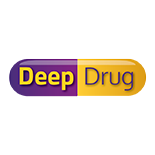
DeepDrug
About Us
The DeepDrug team is led by the PIs Dr. Supratik Mukhopadhyay, a Computer Scientist, and Dr. Michal Brylinski, a Computational Biologist.
Dr. Supratik Mukhopadhyay is a faculty member in Computer Science at Louisiana State University. His research interests lie in the areas of Artificial Intelligence/Machine Learning with applications to Automated Drug Discovery, Satellite Imagery Recognition, Transportation Systems, Sustainable Buildings, Cyber-Physical Human Systems, etc. In these areas, Dr. Mukhopadhyay's research has been supported by NSF, NASA, ONR, DARPA, ARO, DOT, NGA, DOE, NRL, state agencies, and industry. He has more than 110 publications in reputed journals and conferences and has two awarded US Patents.
Dr. Michal Brylinski is a faculty member in Biological Sciences at Louisiana State University. His research interests are in the areas of Computational Biology/Bioinformatics and Automated Drug Discovery. His research has been supported by NIH.
Other Members: Dr. Chris Alvin, Adam Bess, Dr. Robert DiBiano, Tairan Liu, Patrick McGrew, Misagh Naderi, Limeng Pu
TECH INFORMATION
DeepDrug team is on a mission to use the power of AI to improve world health. DeepDrug intends to create a new and time efficient AI-based platform to discover new drugs that can:
- Combat illness with no known cure
- Replace drugs for pathogens that have become drug resistant
- Respond to outbreaks of previously unknown diseases
- Improve the health of the world's population
To this end, DeepDrug is developing a computer aided drug design software that uses AI-based techniques to process very large datasets thereby creating an improved method for identifying new drug compounds rapidly, dramatically shortening the early stage discovery of new drug compounds from years to months, perhaps even weeks. DeepDrug currently comprises four components: eSynth: that uses AI-based search techniques to automatically synthesize new drug compounds from their building blocks, eMolFrag: that can break down an existing drug compound into its building blocks for recombinant synthesis of new drug compounds, eToxPred: that uses machine learning to predict toxicity and synthetic accessibility from molecular structure of synthesized drug compounds, and eDrugRes: that uses graph convolutional networks to determine if a bacteria species is resistant to a drug thereby promoting drug repurposing.